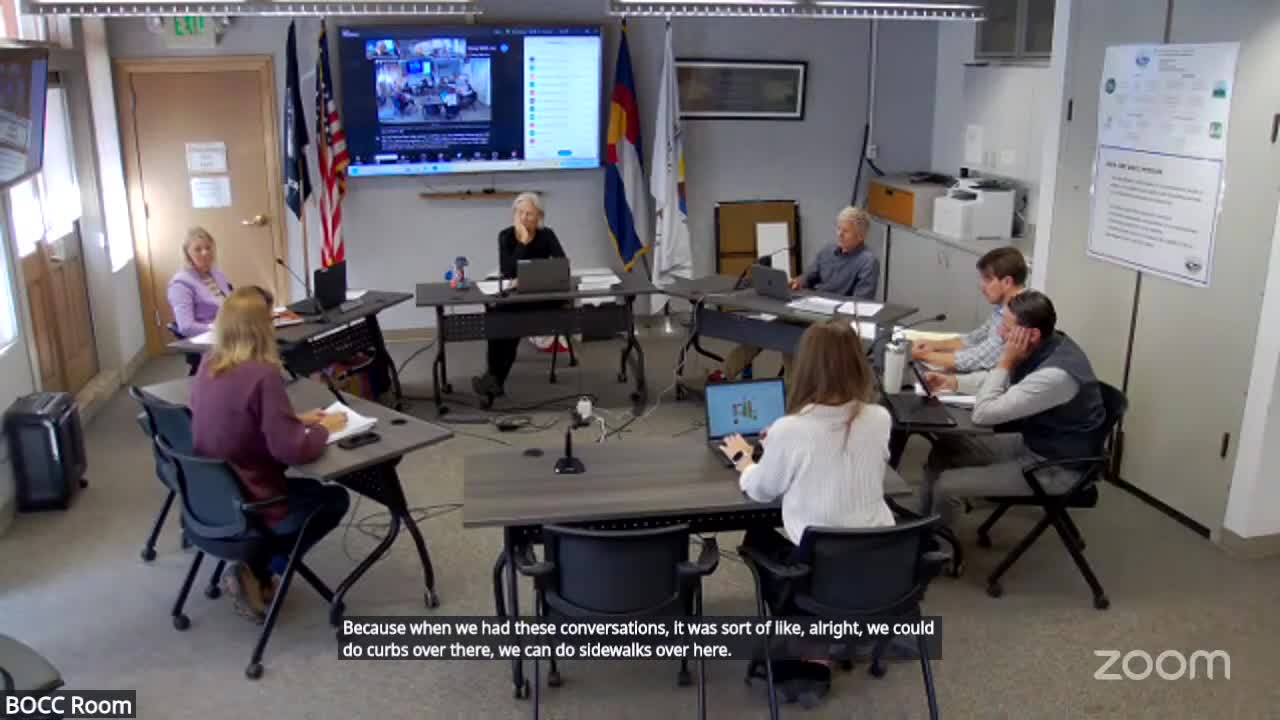Commissioners tentatively back restarting co-responder model as a countywide community intervention program with seed funding in 2026
October 29, 2025 | San Miguel County, Colorado
This article was created by AI summarizing key points discussed. AI makes mistakes, so for full details and context, please refer to the video of the full meeting. Please report any errors so we can fix them. Report an error »

San Miguel County commissioners discussed reviving a behavioral-health paired-response program at their Oct. 29 special meeting, moving away from a law-enforcement co-responder model to a more flexible Community Intervention Program (SIP) that pairs licensed clinicians with lower‑trained, non-deputy partners. Commissioners, county staff and local agencies said the approach used in Montezuma County was a model they want to adapt: teams would be able to respond to crisis and non-crisis behavioral health needs, provide warm handoffs to services and conduct follow-up visits without requiring a dedicated deputy or EMT to accompany the clinician.
Commissioners were told that the SIP idea surfaced from months of interagency discussions including the sheriff’s office, fire districts, town marshals, area clinics and Paragon mobile crisis. Funding options discussed included seeding the program with county start-up funds in 2026 (the draft budget includes $250,000 in preliminary startup funding), a 2027 split between the newly created Behavioral Health Solutions fund and participating agencies, and a goal of the Behavioral Health Solutions panel assuming full funding by 2028 if the ballot question raising the mental health mill levy passes and additional resources materialize.
Panel members proposed a phased funding plan: the county would cover program costs for 2026 to get the program running and the Behavioral Health Solutions panel would be asked to contribute 50% in 2027, with the remainder paid by partner agencies (sheriff, marshal, fire districts, clinics) before the panel picks up the full cost in later years. Commissioners asked staff to produce a more detailed cost estimate and a pilot plan, and asked county staff to coordinate the ask with the Behavioral Health Solutions panel so the request could be phased in the panel’s next budget cycle.
Ending: Commissioners expressed general support for a phased, county‑seeded re-start of the SIP but asked for a detailed implementation plan (team size, staffing model, vehicle/office needs, and partner cost shares) and a recommendation on how to structure the 2026 startup funding and the 2027 funding transition.
Commissioners were told that the SIP idea surfaced from months of interagency discussions including the sheriff’s office, fire districts, town marshals, area clinics and Paragon mobile crisis. Funding options discussed included seeding the program with county start-up funds in 2026 (the draft budget includes $250,000 in preliminary startup funding), a 2027 split between the newly created Behavioral Health Solutions fund and participating agencies, and a goal of the Behavioral Health Solutions panel assuming full funding by 2028 if the ballot question raising the mental health mill levy passes and additional resources materialize.
Panel members proposed a phased funding plan: the county would cover program costs for 2026 to get the program running and the Behavioral Health Solutions panel would be asked to contribute 50% in 2027, with the remainder paid by partner agencies (sheriff, marshal, fire districts, clinics) before the panel picks up the full cost in later years. Commissioners asked staff to produce a more detailed cost estimate and a pilot plan, and asked county staff to coordinate the ask with the Behavioral Health Solutions panel so the request could be phased in the panel’s next budget cycle.
Ending: Commissioners expressed general support for a phased, county‑seeded re-start of the SIP but asked for a detailed implementation plan (team size, staffing model, vehicle/office needs, and partner cost shares) and a recommendation on how to structure the 2026 startup funding and the 2027 funding transition.
View full meeting
This article is based on a recent meeting—watch the full video and explore the complete transcript for deeper insights into the discussion.
View full meeting
